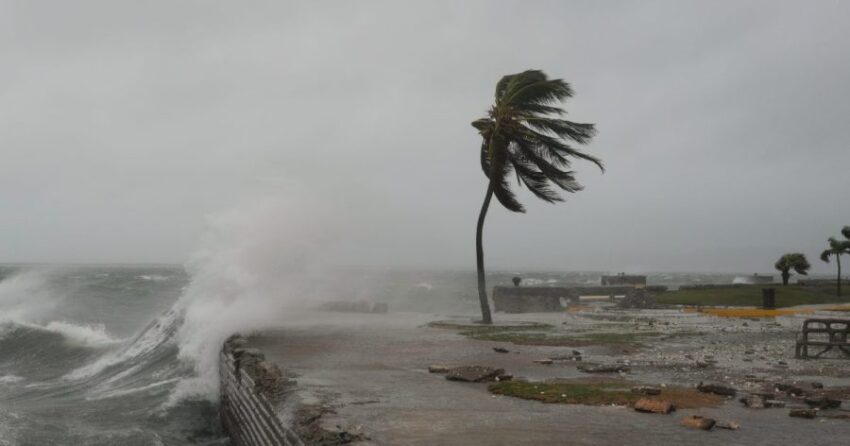KINGSTON, Jamaica (AP) — Hurricane Melissa intensified Tuesday before making landfall in Jamaica, where officials and residents braced for catastrophic winds, flash flooding and landslides from the Category 5 storm, one of the strongest Atlantic hurricanes in history.
The streets in the capital, Kingston, remained largely empty as Melissa approached with 185 mph (295 kph) winds, save for the lone stray dog crossing puddles and a handful of people walking briskly under tree branches waving in a stiff wind.
Desmond McKenzie, deputy chairman of Jamaica’s Disaster Risk Management Council, urged people to seek shelter and stay indoors as the storm crosses the island.
“Jamaica, this is not the time to be brave,” he said.
The Jamaican government said it had done all it could to prepare as it warned of devastating damage from the strongest hurricane to hit the island since recordkeeping began 174 years ago.
“There is no infrastructure in the region that can withstand a Category 5,” Prime Minister Andrew Holness said. “The question now is the speed of recovery. That’s the challenge.”
Massive wind damage is expected in Melissa’s core and Jamaica’s highest mountains could see gusts of up to 200 mph (322 kph), said Michael Brennan, director of the U.S. National Hurricane Center in Miami.
“It’s going to be a very dangerous scenario,” he said, warning that there would be “total building failures.”
Melissa is the fifth most intense Atlantic basin hurricane on record by pressure and the strongest to make landfall since Hurricane Dorian in 2019, according to hurricane specialist and storm surge expert Michael Lowry.
It is “a worst-case scenario unfolding for Jamaica,” he said.
Jamaica prepares for the aftermath
Landslides, fallen trees and numerous power outages were reported as Melissa came ashore, with officials in Jamaica cautioning that the cleanup and damage assessment could be slow. The storm is expected slice diagonally across the island and head for Cuba.
Melissa made landfall in southwestern Jamaica near New Hope and was moving north-northeast at 9 mph (15 kph), according to the National Hurricane Center. The hurricane was centered about 25 miles (40 kilometers) southeast of Negril, Jamaica, and about 145 miles (235 kilometers) southwest of Guantánamo, Cuba.
A life-threatening storm surge of up to 13 feet (4 meters) is expected across southern Jamaica, with officials concerned about the impact on some hospitals along the coastline. Health Minister Christopher Tufton said some patients were relocated from the ground floor to the second floor, “and (we) hope that will suffice for any surge that will take place.”
One man called a local radio station and said he urgently needed to help a woman in western Jamaica who had gone into labor as the storm prepared to make landfall. The show’s host pleaded with listeners to let the man know the safest hospital for the woman. An obstetrician called in and provided detailed directions on how to deliver a baby, if necessary.
Colin Bogle, a Mercy Corps adviser based near Kingston, said most families are sheltering in place despite the government ordering evacuations in flood-prone communities.
“Many have never experienced anything like this before, and the uncertainty is frightening,” he said. “There is profound fear of losing homes and livelihoods, of injury, and of displacement.”
McKenzie said the government was prepared for rescues immediately after the storm: “We have boats, helicopters, you name it.”
The storm already was blamed for seven deaths in the Caribbean, including three in Jamaica, three in Haiti and one in the Dominican Republic, where another person remains missing.
Necephor Mghendi, the International Red Cross’ regional head of delegation for the English- and Dutch-speaking Caribbean, said an estimated 1.5 million people in the storm’s path will be affected but “the entire population may feel the impact one way or the other.”
More than 240,000 customers were without power before landfall and about one-fourth of the telecommunications system was offline, said Darryl Vaz, transport and energy minister. He said crews will clean and run tests at the island’s two main international airports Wednesday in hopes of receiving emergency relief flights as early as Thursday.
U.N. agencies and dozens of nonprofits had food, medicine and other essential supplies positioned as they awaited a distribution rush after the storm.
Matthew Samuda, Jamaica’s water and environment minister, said he had more than 50 generators available to deploy after the storm, but warned people to set aside clean water and use it sparingly.
“Every drop will count,” he said.
Melissa takes aim at Cuba
Melissa was expected to make landfall in eastern Cuba late Tuesday or early Wednesday. Up to 20 inches (51 centimeters) of rain were forecast in areas, along with a significant storm surge along the coast.
Authorities in eastern Holguín province prepared to evacuate more than 200,000 people Tuesday and evacuated a similar number of people earlier from the town of Banes.
Reports on social media and state television showed blue and white buses ferrying evacuees to shelter early Tuesday. Families clutched babies and belongings and elderly people steadied themselves with canes as they disembarked.
“This phenomenon is very dangerous,” Deputy Prime Minister Eduardo Martínez said in a statement from Banes, where he was located in what appeared to be a shelter. “It is unprecedented.”
Melissa also has drenched the southern regions of Haiti and the Dominican Republic, with a tropical storm warning still in effect for Haiti. The hurricane was forecast to turn northeast and strike the southeast Bahamas by Wednesday evening.
 Read: Read More
Read: Read More









